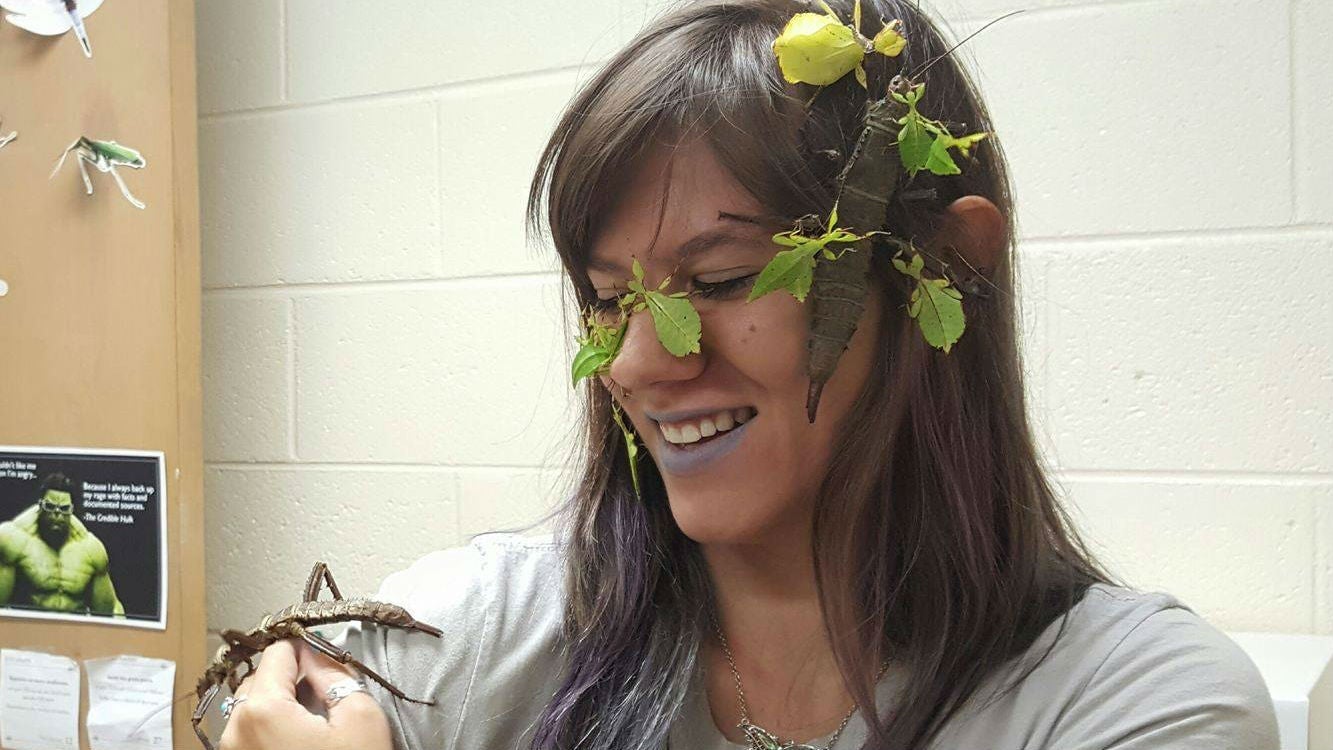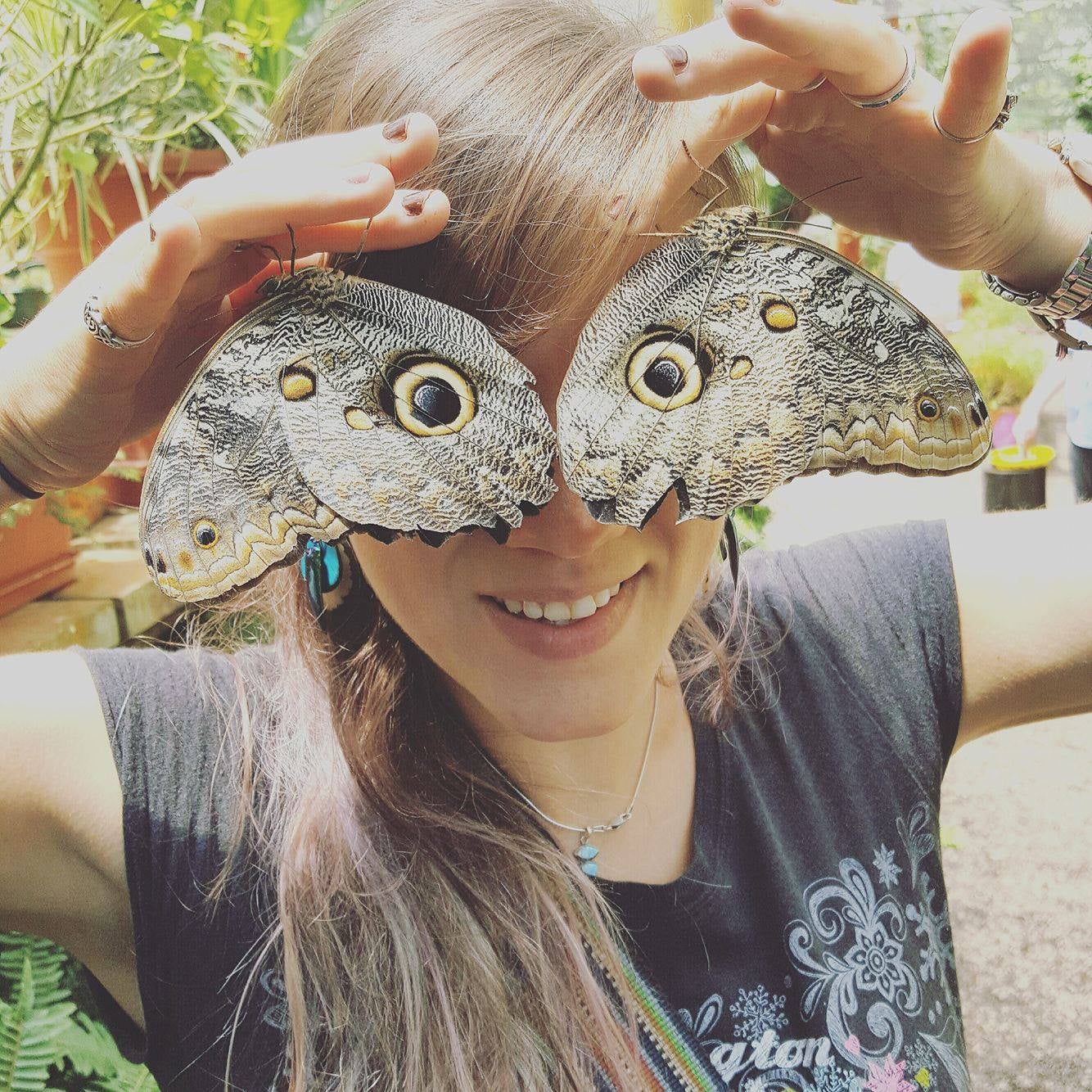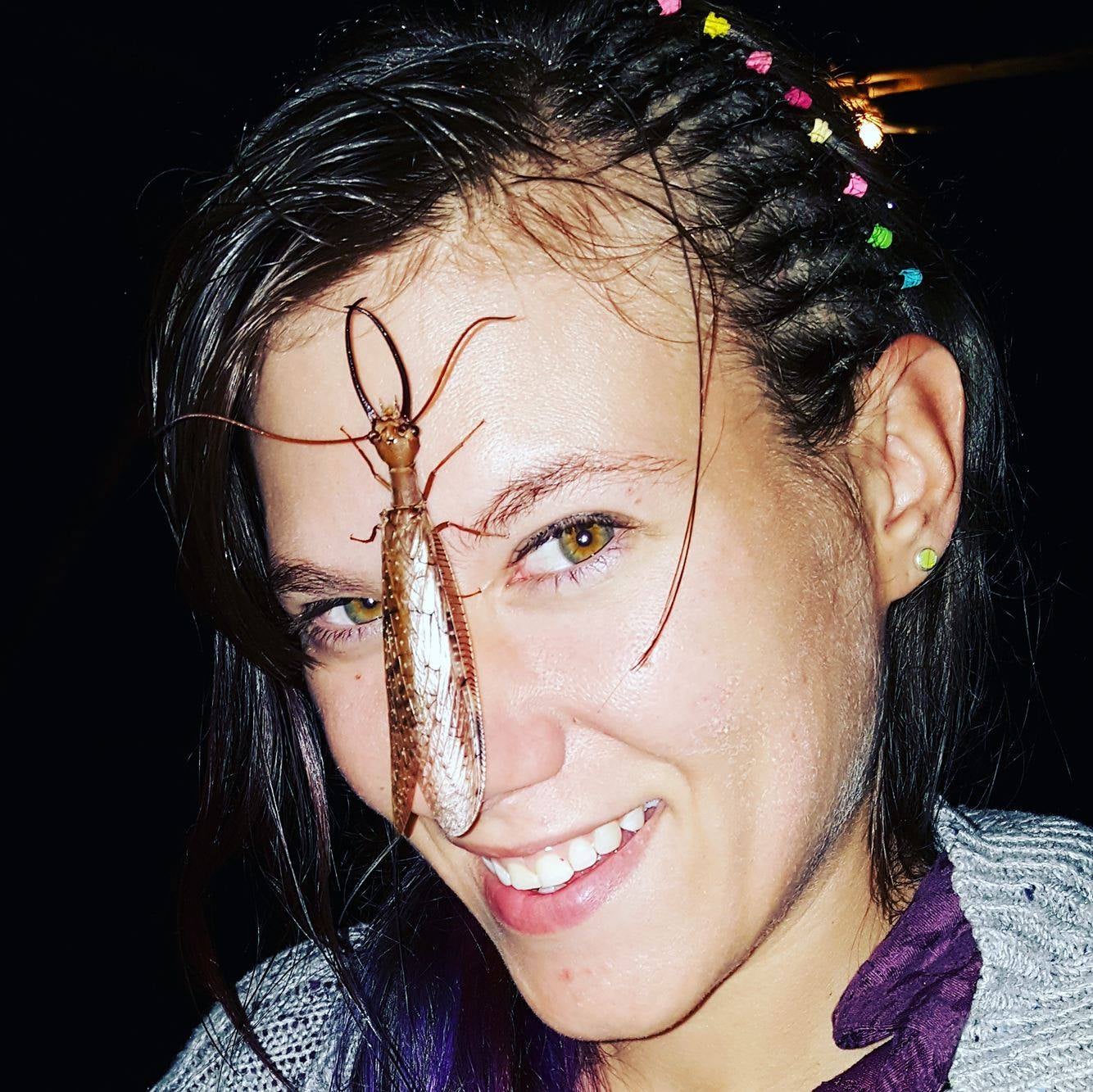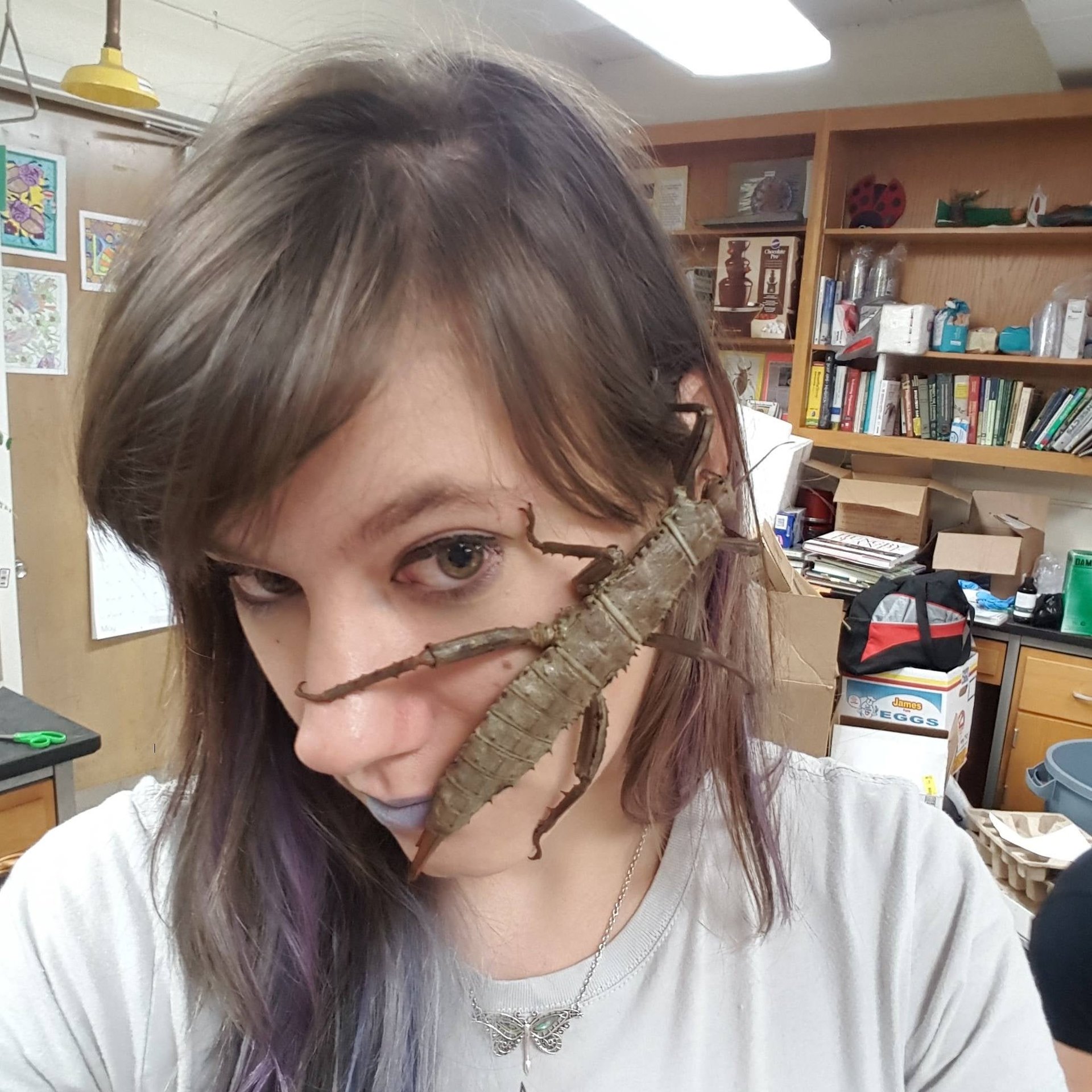To get others to appreciate bugs, an entomologist puts them on her face
Nancy Miorelli has never been afraid of bugs.


Nancy Miorelli has never been afraid of bugs.
“I understand that some can hurt me, and I have respect for those,” she says. “But I’m not afraid of them.”
Miorelli is an American entomologist currently living in the Maquipucuna (which means “hand of nature” in Quechua, the language of the tribe native to the region) cloud forest reserve in Ecuador, where she gives tours and presentations showcasing local insects and highlighting their importance in the ecosystem. And on the side, she tries to help people face their fears of insects by putting them on her on her face.

“Fear is so controlling,” she says. “If you’re afraid of something…it dictates what you do.”
In North America, Europe, and even Australia, insects are small, and considered pests. Miorelli thinks the attitude towards insects in these areas is driven by the tendency there for buildings to be closed off, to create distinct indoor and outdoor areas and to maintain a controlled climate. A lot of the insects in these areas bite or sting, which makes people understandably wary of them, too. Often, she’ll meet people who want to put the largest possible distance between themselves and insects—which means they’ll be less likely to explore and enjoy the local environment.

The insects that live in other parts of the world, though, can grow to be quite large and play an important role in ecosystems by being both predators and prey for other animals.
Putting insects up to your face gives people a relatable size comparison, she says, and it also shows the bugs can be benign and beautiful. “When you start showing these big mantises compared to these tiny frogs, it starts to make sense that these insects can eat vertebrates,” or animals with spines, she says.

Miorelli has been tweeting pictures of herself with bugs on her face with the hashtag #FaceBug, which first came about a couple of years ago but lost momentum over time. Recently, while operating the Twitter handle @realscientists, Miorelli revived the trend and got other entomologists to post their creatures of study on their faces, too.
As cool as these critters are, it’s not necessarily something you should try at home, unless you are an expert (or have an expert nearby). Not all insects are benign; let’s not forget that a live cockroach was once found crawling around a woman’s skull, and that the pain from some insect stingers has been described as “spilling a beaker of hydrochloric acid onto a cut.”